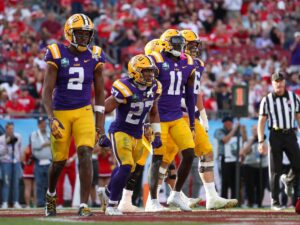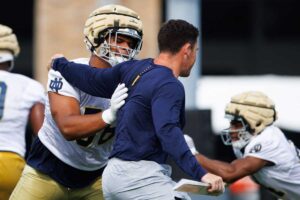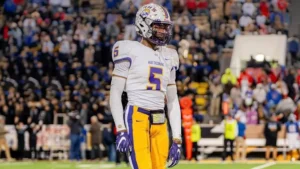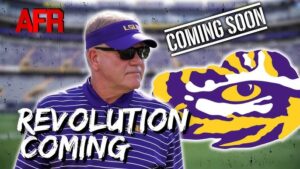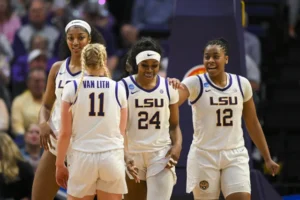Power at the Plate: Frank Howard and Boog Powell Shine at the 1969 All-Star Game

Power at the Plate: Frank Howard and Boog Powell Shine at the 1969 All-Star Game
The 1960s and 1970s were a golden era for power hitting in Major League Baseball. Among the most iconic sluggers of this period were Frank Howard and Boog Powell, two players whose imposing figures and towering home runs captured the imagination of fans across the league. Both men left a lasting impact on the game, not only with their prodigious power but also with their memorable moments on the field. One such moment came during the 1969 All-Star Game at RFK Stadium in Washington, D.C., where Howard and Powell were key participants, showcasing their power-hitting prowess to the world.
The 1969 All-Star Game, which took place on July 22 at the newly constructed RFK Stadium, was a celebration of baseball’s best talent, and the game featured some of the most famous names of the era, including Willie Mays, Hank Aaron, and Roberto Clemente. However, the power of Howard and Powell stood out that day, and their presence on the field symbolized the era’s growing focus on the long ball. Both men were known for their ability to launch towering home runs, and their performance during this game, as well as their respective careers, would cement their places in the history of the sport.
Frank Howard: The Washington Senators’ Titan
Frank Howard, known as “The Capital Punisher” during his time with the Washington Senators, was one of the most feared sluggers of his era. Standing at 6’7″ and weighing 250 pounds, Howard’s immense size was matched only by the distance he could hit a baseball. Born on August 8, 1936, in Columbus, Ohio, Howard was a standout player at Ohio State University before being signed by the Brooklyn Dodgers in 1958. After several years in the minor leagues, Howard made his major league debut with the Dodgers in 1960.
However, it was with the Washington Senators, later the Texas Rangers, that Howard would truly make his mark as one of the league’s most powerful hitters. Howard was traded to the Senators in 1964, and from that moment on, he became the face of the franchise. In a ballpark that was notoriously difficult for right-handed hitters to hit home runs, Howard excelled in ways that few others could. His ability to hit the ball with immense power made him an intimidating presence at the plate, and fans would gather in droves to watch him crush the ball into the far reaches of Griffith Stadium.
In 1968, Howard experienced his breakout season. That year, he led the American League with 44 home runs, driving in 106 RBIs and finishing fourth in the MVP voting. His towering home runs became a regular feature of Senators games, and his status as one of the league’s top sluggers was solidified. Yet, it was in 1969 that Howard reached his peak as a power hitter.
1969: A Record-Breaking Season
The 1969 season was historic for Frank Howard, not only for his All-Star appearance but for his incredible power display. Howard would hit 48 home runs that year, which led the American League and helped him finish second in MVP voting behind the Orioles’ Brooks Robinson. His remarkable power was on full display in a season where he set career highs in several categories, including RBIs (111), runs scored (96), and total bases (370).
Howard’s 48 home runs were not just a personal achievement—they were a sign of the era’s changing landscape. The late 1960s and early 1970s were a time when power hitting was becoming increasingly important in Major League Baseball. Players like Howard, with the ability to send the ball flying over the fence with regularity, were redefining the role of the slugger in the sport. Howard’s monstrous homers became the stuff of legend, and the 1969 All-Star Game was the perfect stage for him to showcase his unique talents.
That year’s All-Star Game, hosted in Washington, D.C., was a rare opportunity for Howard’s home crowd to witness him on the grandest stage of baseball. The Senators’ franchise was not a perennial contender at the time, but Howard’s individual brilliance was enough to make him a star. His inclusion in the 1969 All-Star Game was a nod to his status as one of the game’s elite players.
Howard’s performance at the All-Star Game was just one example of his influence. His power was a symbol of what the game was becoming—more focused on long ball hitters than on the small ball tactics that had dominated the earlier part of the century. His selection for the game was a testament to his contributions to the league and to the changing tides of baseball in the late 1960s.
Boog Powell: The Orioles’ Powerhouse
On the other side of the American League was another slugger whose career would come to define the era—Boog Powell of the Baltimore Orioles. Like Howard, Powell was a big man—standing 6’4″ and weighing around 250 pounds. He was the epitome of power-hitting in an era when home runs were becoming the focal point of the game. Born on November 17, 1941, in Lakeland, Florida, Powell was drafted by the Orioles in 1959 and quickly worked his way up through the minor leagues.
Powell made his major league debut in 1961, but it wasn’t until the mid-1960s that he began to establish himself as one of the league’s premier power hitters. His breakout season came in 1966, when he hit 34 home runs and helped lead the Orioles to the World Series title. Powell’s success with the Orioles, a team that was filled with talent during the 1960s and 1970s, was part of a collective effort that made the Orioles one of the most successful franchises of the era.
Despite the wealth of talent around him, Powell’s bat was always a key asset for the Orioles. In 1969, Powell hit 37 home runs, drove in 121 RBIs, and finished the season with a .297 batting average. His performance earned him his first of two career All-Star Game selections, and his selection to the 1969 game was a recognition of his place among the league’s best power hitters.
Powell was an anchor in the Orioles lineup throughout the 1960s and 1970s, consistently putting up impressive home run totals. Like Howard, Powell was part of a larger shift in baseball, where power hitters were becoming central figures in the game. His 1969 All-Star Game appearance, like Howard’s, was a testament to his standing in the game, and his presence at RFK Stadium only underscored the growing importance of the long ball.
The 1969 All-Star Game: A Showcase of Power
The 1969 All-Star Game was a historic event in its own right. It marked the first time the game was played in Washington, D.C., since 1956, and it also was the first year that the game featured a more modern format, with each league selecting its roster of players from a more comprehensive list of nominees. The game also served as a precursor to the “Year of the Pitcher,” which would dominate the early 1970s, but the 1969 All-Star Game was more about showcasing the power hitters of the day.
With Howard and Powell representing the American League as some of the game’s top sluggers, their presence on the field brought extra attention to the idea of the home run as a defining characteristic of the era. The All-Star Game was a chance for fans across the country to see two of the most powerful hitters of the decade in action on the same stage.
In terms of the game itself, the National League came out victorious with a 9-3 win, but the game wasn’t just about the final score. The event was a platform for the personalities and abilities of players like Howard and Powell to shine. For Howard, his massive presence at the plate was a reminder of the kind of power he wielded on a daily basis with the Senators. Similarly, Powell’s selection and eventual performance symbolized his place in the heart of the Orioles’ lineup, a key contributor to one of the most formidable teams of the 1960s and 1970s.
Although neither player hit a home run during the game, their inclusion in the event was a recognition of their power and the lasting impact they had on the game. The fact that both Howard and Powell were among the 1969 All-Star Game’s participants speaks volumes about their ability to transcend the ordinary and enter the realm of baseball greatness.
Legacy of Frank Howard and Boog Powell
The careers of Frank Howard and Boog Powell were not only defined by their power-hitting exploits but by the way they represented an era of baseball that valued strength and dominance at the plate. Howard, with his massive frame and prodigious home runs, became a symbol of what it meant to be a slugger in the 1960s. His 48 home runs in 1969, his All-Star Game appearances, and his continued dominance into the 1970s with the Texas Rangers helped cement his legacy as one of the greatest power hitters of his time.
Boog Powell, meanwhile, would go on to win an MVP award in 1970 and help lead the Orioles to multiple American League pennants and a World Series title. His consistent power and ability to drive in runs made him one of the premier hitters of his generation. Like Howard, Powell’s career represented the shift in baseball toward the reliance on power hitters to generate offense.
While neither Howard nor
